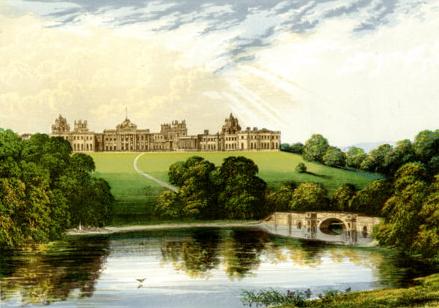On November 14th, Jeri Bapasola gave us a most informative and entertaining talk on “Building Blenheim – the house and gardens”.
She began with an account of the early lives of both Sarah Jenyns and John Churchill (who later became the Duke and Duchess of Marlborough). Neither came from wealthy families, and financial hardship in her youth marked Sarah’s attitude to money for the rest of her life.
After their great success at court under Queen Anne, and John Churchill’s famous victory at Blenheim they were granted an estate at Woodstock to build a suitably grand house. The contract for financing the build signed by the Lord Treasurer Sidney Godolphin was vague and lacked detail, given the chosen architect, Vanburgh, a free hand, and much money was wasted during the early phase of the build as a result of many changes in the design.
The victory over the French was celebrated everywhere in the building and particularly in the ceiling painting in the grand salon, the cost of which took up a large part of the decoration budget.
Vanburgh’s profligacy resulted in conflict with the Duchess, and he was replaced by Nicholas Hawksmoor. Grinling Gibbons was responsible for the elaborate stone carvings which were intended to rival those of Versaille. He was paid £75 for each piece.
The Palace was unfinished at the time of the Duke’s death and it became more of a monument to the success of war rather than the home envisaged by the Churchills. The work of the park was begun by Henry Wise, who laid out the formal gardens. During the time of the 4th Duke, Capability Brown was engaged to design the park and lake for which he was paid £20,500.
The 9th Duke employed Achille Duchene, who designed and planted the new water garden which formed a link between the house and lake – another feature that looked back to Versaille.
Belnheim is now a World Heritage site on the strength of the Palace and Capability Brown’s park.

